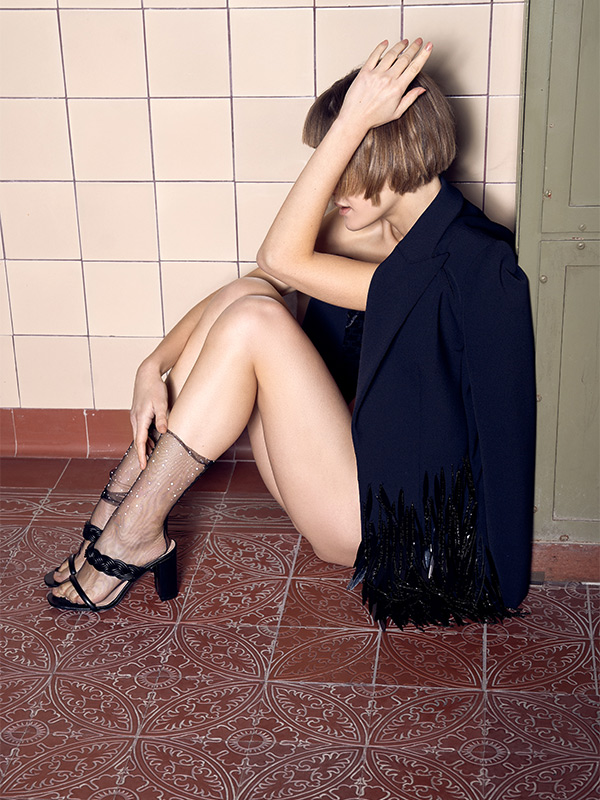The 1920s are regarded as an eventful (and moving) era worldwide. Even the thought of the 1920s leaves us with an insatiable longing for new beginnings and wild freedom paired with classic elegance.
Whether the Roaring Twenties in the USA or the Roaring Twenties in Europe, history was made 100 years ago in many respects and today we can do more than just look back on it. Many of the classics from the 1920s can still be used today without hesitation to combine style, design and function. Here we reveal which five wonderful style icons from the 1920s definitely deserve a place in our home.
The 20s to take a seat – Marcel Breuer, Mies van der Rohe and Co.
The 1920s were not only a fascinating era in terms of music and fashion, but also in terms of design. The Bauhaus introduced a completely new type of furniture design – founded by Walter Gropius in Weimar in 1919, the Bauhaus changed the way we look at furniture, how furniture can look .
Instead of unnecessary sweeps and bourgeois stuffiness, the Bauhaus focused on functional forms and industrial materials. Even after almost a hundred years, swinging chairs such as the Wassily chair (Marcel Breuer) have lost none of their timeless style.
Even the Le Corbusier lounger, the Bauhaus bench by Gropius himself or chairs by Mies van der Rohe are still manufactured true to the original and fit perfectly into modern industrial design interiors. After all, it is no coincidence that Apple also bases its industrial designs on the Bauhaus.

A truly timeless watch – Atmos from Jaeger-LeCoultre
For some time, the watch was considered an almost extinct relic, after all, we all carry a watch around with us on our phones. But this also means that the watch is freed from its functionality to a certain extent and the design comes to the fore.
As early as 1928, Jaeger-LeCoultre designed the Atmos designed a very special grandfather clock in the form of the Atmos, which combines an elegant Art Deco style in various metal alloys with a floating feel and a partially open mechanism. Without the second hand, which is obsolete here, the Atmos is a brilliant design object that provides a fluid glimpse into the inner workings.
The design of the Atmos combines the best of filigree and classic elements and a strong body with a timeless look. The Atmos goes particularly well with wood and dark interiors and is an eye-catcher of the highest class even between the latest technology. The mechanism, which was perfected back in 1928, has lost none of its charm today.
Pomp and artistry in interior design – from Ruhlmann to Gray
The interior design of the 1920s can do more than just Bauhaus – after all, not all of us like the cool, industrial, bourgeois look. If you want something a little more classic, then warm wood tones and curves can also find their way back into our living spaces. Thanks to elegant laminated surfaces, this creates a high-quality, warm furnishing feeling. This is reminiscent of mid-century furniture, but is much more opulent.
Art Déco is one of the furnishing styles that we should definitely should definitely take a closer look at because this is where two schools of design meet. Wood, leather, metal and crystal mingle here to create a cocktail ambience in which we feel at home at any time of day or night.
We should definitely make a note of a few pieces: classic armchairs with thick cushions, hanging crystal lamps and dark sideboards (with bar pull-outs).
While the elaborate furniture by designer Ruhlmann is now only available as replicas or restored originals, timeless side tables such as the “Petite Coiffeuse” (Eileen Gray) are still very popular as licensed products.

Celebrate in the style of the 20s
In terms of fashion, the 1920s were a daring departure from previous styles – especially for women. Fashion became shorter and skimpier, the corset disappeared from the closet completely and even pants were allowed to be worn from then on.
Clothing in the style of the Golden Twenties can be found in abundance, but some originals have also survived the test of time, and this applies especially for the pieces of one famous designer Coco Chanel.
So if we don’t just want to recreate the twenties in terms of fashion, but really want to live them, then there is no way around Coco Chanel. The absolute must-haves include two-tone shoes such as the Sling-Back Calfskin White and Black models from Chanel. High-quality, high-priced and highly elegant, these shoes are just as suitable for the Charleston as they are for a trip to a posh restaurant.
Prints and reprints of a special film era
The 1920s were not only the decade of bars and nightclubs, but also of lively movie theaters. Driven by Soviet film essays and expressionist films from Germany, masterpieces such as “Battleship Potemkin”, “Metropolis” and “Nosferatu” were created. Even today, these silent films still fascinate viewers with their use of drastic stylistic devices – and this was not only reflected on the screen, but also in the marketing campaigns in the film industry.
The 1920s were also an era in which graphic design became more dramatic, modern and elegant. Here, Art Deco and Expressionism merged and the lettering took on clear and expressive traits. After more than 100 years, only fragments of the original posters have survived and are mainly to be found in archives. But reprints or prints on canvas also convey the cinematic lifestyle of the Golden Twenties. The only thing is that the posters or canvases should be elegantly framed to really do justice to the graphic art.
One hundred years later – why we understand the 1920s so well
The Roaring Twenties are an age between the ages. Framed by two brutal world wars and at the interface between the industrialization of the West and modern radio technology, the 1920s were an era of transition. Here, art and modern practicality merge, the liberation of the body is in the foreground, but at the same time the construction is classic. Style is used and then broken. Hotels gleam in the shimmer of shiny Art Deco and living spaces are radically reduced by the functional Bauhaus.
The 1920s unite all these contradictions and perhaps that is why they cast such a spell over us – because we are living in the 1920s again and the contradictions still make up our lives.
You can find clothes from the 1920s in these vintage stores in Zurich.








